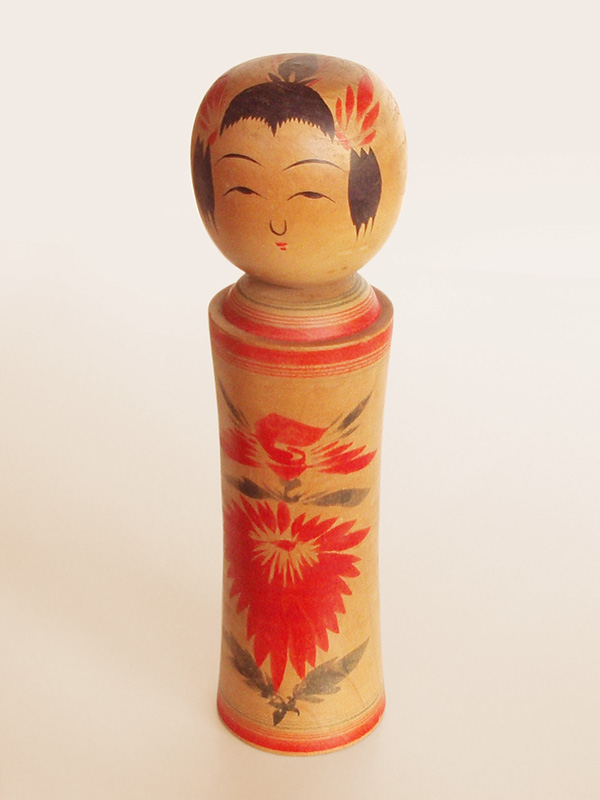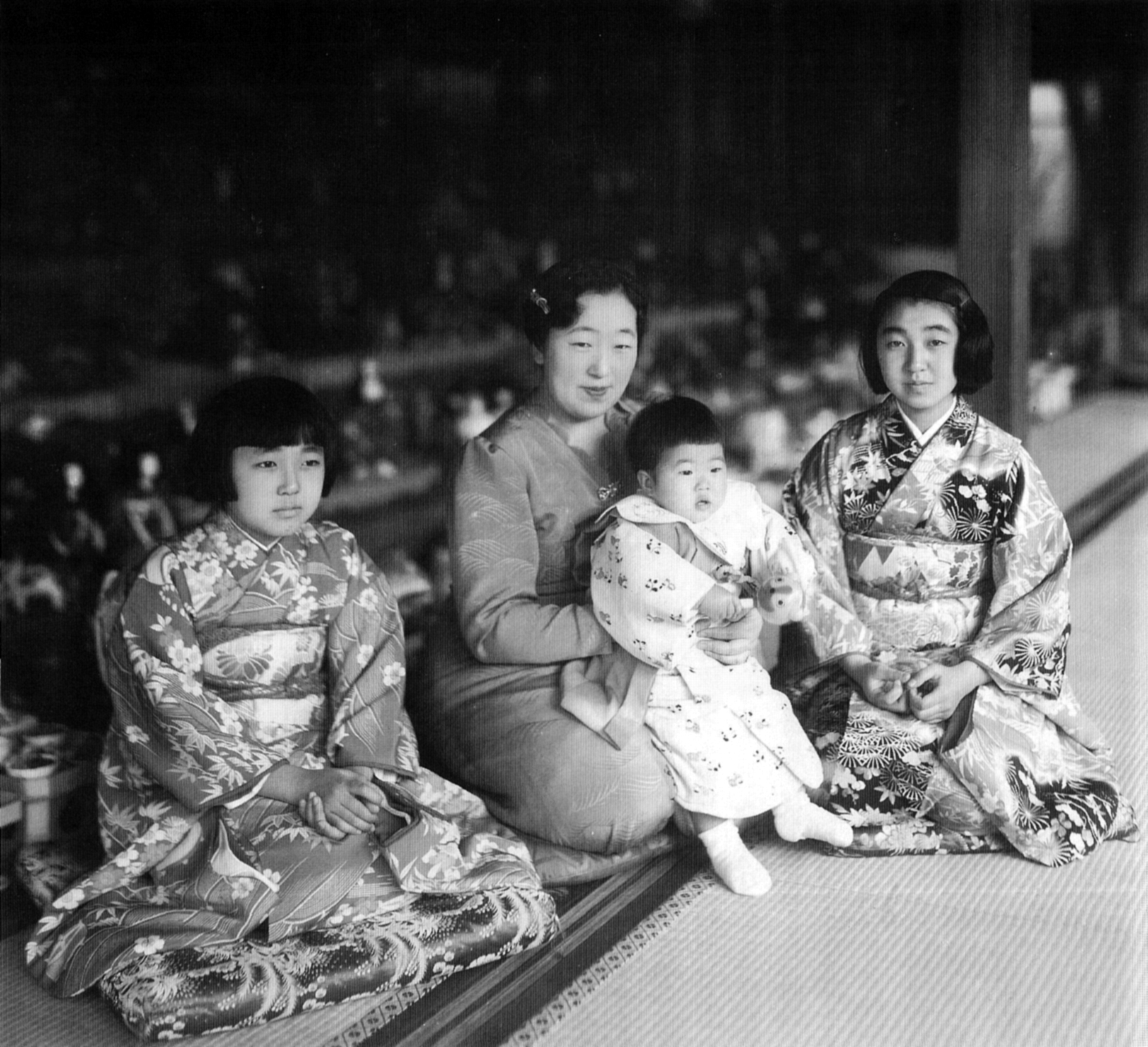|
Hōko (doll)
A is a kind of soft-bodied doll given to young women of age and especially to pregnant women in Japan to protect both mother and unborn child. Traditionally, ''hōko'' dolls were made of silk and human hair, and stuffed with cotton. The dolls could be made for both boys and girls. Boys' dolls would be given up and "consecrated" at a shrine when boys came of age at 15 years old, while girls would give up their dolls at marriage. The dolls were given to children either at birth, or on special days shortly after birth. Pregnant woman would be given new ones, so as to protect her and her unborn child together, for the duration of the pregnancy. History ''Hōko'' can be traced back to "talismanic figures" from early Japanese history, and are likely related to the concept of using paper dolls (''hina''), as "stand-ins for people." The use of in spiritual practice as stand-ins to take on the brunt of a person's sins or misfortune also played a role in the creation of ''hōko'' dolls a ... [...More Info...] [...Related Items...] OR: [Wikipedia] [Google] [Baidu] |
Ofuda
In Shinto and Buddhism in Japan, an is a talisman made out of various materials such as paper, wood, cloth or metal. are commonly found in both Shinto shrines and Buddhist temples and are considered to be imbued with the power of the deities () or Buddhist figures revered therein. Such amulets are also called . Certain kinds of are intended for a specific purpose (such as protection against calamity or misfortune, safety within the home, or finding love) and may be kept on one's person or placed on other areas of the home (such as gates, doorways, kitchens, or ceilings). Paper may also be referred to as , while those made of wood may be called . , another kind of Japanese amulet, originated and may be considered as a smaller, portable version of . A specific type of is a talisman issued by a Shinto shrine on which is written the name of the shrine or its enshrined and stamped with the shrine's seal. Such , also called , or , are often placed on household Shinto altars () ... [...More Info...] [...Related Items...] OR: [Wikipedia] [Google] [Baidu] |
Kokeshi
, are simple wooden Japanese dolls with no arms or legs that have been crafted for more than 150 years as a toy for children. Originally from the northeastern region ( Tōhoku-chihō) of Japan, they are handmade from wood, having a simple trunk and head with a few thin, painted lines to define the face. The body often has floral and/or ring designs painted in red, black, and sometimes green, purple, blue, or yellow inks, and covered with a layer of wax. One characteristic of kokeshi dolls is their lack of arms or legs. Since the 1950s, kokeshi makers have signed their work, usually on the bottom and sometimes on the back. History and etymology The origin and naming of ''kokeshi'' is unclear, with historical ateji spellings including 小芥子, 木牌子, 木形子, and 木芥子. The hiragana spelling こけし was agreed on at the All-Japan Kokeshi Exhibition (全国こけし大会) at Naruko Onsen in August 1939. A plausible theory is that "kokeshi" is derived from or , and ... [...More Info...] [...Related Items...] OR: [Wikipedia] [Google] [Baidu] |
Teru Teru Bōzu
A is a small traditional handmade that originated from the Edo period in Japan, made from white paper or cloth, Japanese farmers began hanging outside of their window by a string. This talisman is supposed to have magical powers to bring good weather and to stop or prevent a rainy day. ''Teru'' is a Japanese verb that describes sunshine, and a ''bōzu'' is a Buddhist monk (compare the word bonze), or in modern slang, "bald-headed"; ''bōzu'' is also used as a term of endearment for addressing little boys. ''Teru Teru bōzu'' became popular during the Edo period among urban dwellers, whose children would make them the day before the good weather was desired and chant, "Fine-weather priest, please let the weather be good tomorrow." Traditionally, if the weather does turn out well, a libation of holy sake is poured over them, and they are washed away in the river. Today, children make ''teru teru bōzu'' out of tissue paper or cotton and string and hang them from a window when t ... [...More Info...] [...Related Items...] OR: [Wikipedia] [Google] [Baidu] |
Japanese Traditional Dolls
are one of the traditional Japanese crafts. There are various types of traditional dolls, some representing children and babies, some the imperial court, warriors and heroes, fairy-tale characters, gods and (rarely) demons, and also people of the daily life of Japanese cities. Many have a long tradition and are still made today for household shrines, formal gift-giving, or for festival celebrations such as , the doll festival, or , Children's Day. Some are manufactured as a local craft, to be purchased by pilgrims as a souvenir of a temple visit or some other trip. History There may be a continuity in the making of the , humanoid figures, by the ancient Jōmon culture in Japan (8000–200 BC), which were associated with fertility or shamanistic rites, at a time when dolls were thought to have souls. Dolls also have continuity from the funerary figures of the subsequent Kofun culture (around 300–600 AD). Expert Alan Pate notes that temple records refer to the making of a ... [...More Info...] [...Related Items...] OR: [Wikipedia] [Google] [Baidu] |
Hinamatsuri
, also called Doll's Day or Girls' Day, is a religious (Shinto) holiday in Japan, celebrated on 3March of each year. Nussbaum, Louis-Frédéric (2005)"Hina Matsuri"in ''Japan Encyclopedia'', p. 313. Platforms covered with a red carpet–material are used to display a set of representing the Emperor, Empress, attendants, and musicians in traditional court dress of the Heian period. Customs is one of the that are held on auspicious dates of the Chinese calendar: the first day of the first month, the third day of the third month, and so on. After the adoption of the Gregorian calendar, these were fixed on 1January, 3March, 5May, 7July, and 9September. The festival was traditionally known as the , as peach trees typically began to flower around this time. Although this is no longer true since the shift to Gregorian dates, the name remains and peaches are still symbolic of the festival. The primary aspect of is the display of seated male and female dolls (the and ), wh ... [...More Info...] [...Related Items...] OR: [Wikipedia] [Google] [Baidu] |
Concealed Shoes
Concealed shoes hidden in the fabric of a building have been discovered in many European countries, as well as in other parts of the world, since at least the early modern period. Independent researcher Brian Hoggard has observed that the locations in which these shoes are typically found – in chimneys, under floors, above ceilings, around doors and windows, in the roof – suggest that some may have been concealed as magical charms to protect the occupants of the building against evil influences such as demons, ghosts and witches. Others may have been intended to bestow fertility on a female member of the household, or been an offering to a household deity. Concealed shoes have been found in many types of buildings, including country houses, public houses, a Benedictine monastery and a Baptist church. The earliest yet reported was discovered behind the choir stalls in Winchester Cathedral, which were installed in 1308. Northampton Museum maintains a Concealed Shoe Index, whic ... [...More Info...] [...Related Items...] OR: [Wikipedia] [Google] [Baidu] |
Apotropaic Magic
Apotropaic magic (from Greek "to ward off") or protective magic is a type of magic intended to turn away harm or evil influences, as in deflecting misfortune or averting the evil eye. Apotropaic observances may also be practiced out of superstition or out of tradition, as in good luck charms (perhaps some token on a charm bracelet), amulets, or gestures such as crossed fingers or knocking on wood. Many different objects and charms were used for protection throughout history. Symbols and objects Ancient Egyptian Apotropaic magical rituals were practiced throughout the ancient Near East and ancient Egypt. Fearsome deities were invoked via ritual in order to protect individuals by warding away evil spirits. In ancient Egypt, these household rituals (performed in the home, not in state-run temples) were embodied by the deity who personified magic itself, Heka. The two gods most frequently invoked in these rituals were the hippopotamus-formed fertility goddess, Taweret, and the ... [...More Info...] [...Related Items...] OR: [Wikipedia] [Google] [Baidu] |
Shogakukan
is a Japanese publisher of dictionaries, literature, comics (manga), non-fiction, DVDs, and other media in Japan. Shogakukan founded Shueisha, which also founded Hakusensha. These are three separate companies, but are together called the Hitotsubashi Group, one of the largest publishing groups in Japan. Shogakukan is headquartered in the Shogakukan Building in Hitotsubashi, part of Kanda, Chiyoda, Tokyo, near the Jimbocho book district. The corporation also has the other two companies located in the same ward. International operations In the United States Shogakukan, along with Shueisha, owns Viz Media, which publishes manga from both companies in the United States. Shogakukan's licensing arm in North America was ShoPro Entertainment; it was merged into Viz Media in 2005. Shogakukan's production arm is Shogakukan-Shueisha Productions (previously Shogakukan Productions Co., Ltd.) In March 2010 it was announced that Shogakukan would partner with the American comics publish ... [...More Info...] [...Related Items...] OR: [Wikipedia] [Google] [Baidu] |
Tōkyō
Tokyo (; ja, 東京, , ), officially the Tokyo Metropolis ( ja, 東京都, label=none, ), is the capital and largest city of Japan. Formerly known as Edo, its metropolitan area () is the most populous in the world, with an estimated 37.468 million residents ; the city proper has a population of 13.99 million people. Located at the head of Tokyo Bay, the prefecture forms part of the Kantō region on the central coast of Honshu, Japan's largest island. Tokyo serves as Japan's economic center and is the seat of both the Japanese government and the Emperor of Japan. Originally a fishing village named Edo, the city became politically prominent in 1603, when it became the seat of the Tokugawa shogunate. By the mid-18th century, Edo was one of the most populous cities in the world with a population of over one million people. Following the Meiji Restoration of 1868, the imperial capital in Kyoto was moved to Edo, which was renamed "Tokyo" (). Tokyo was devastated ... [...More Info...] [...Related Items...] OR: [Wikipedia] [Google] [Baidu] |






